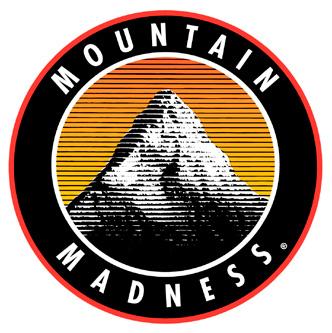
14 minute read
Kilimanjaro Climb and Safari with Mountain Madness
Use Face the Current’s promotional code “mountain” for $500 off to join Mountain Madness on a
once in a lifetime climb of Kilimanjaro! This code is also valid for $100 off domestic climbs and $200 off all other international climbs. Valid through June 30, 2021. On this trekking ascent—one of the Seven Summits—you’ll be happily surprised at the quality of the experience every step of the way. Mountain Madness’ less-traveled route requires no technical experience and, as a result of their extended itinerary and logistical strategy honed over thirty-five years, their success and satisfaction rates are consistently high. In fact, more than ninety percent of all Mountain Madness clients successfully summit Kilimanjaro! To accomplish this, you need only be in great physical shape and have the desire to stand atop the “roof of Africa”. Coupled with Mountain Madness’ private camps and game-viewing safaris, you’re sure to have a memorable African adventure.
Advertisement

The Lomosho-Shira Plateau-Western Breach is the best non-technical route on the mountain and was pioneered by Mountain Madness founders Wes Krause and Scott Fischer in 1984. Remote and scenic, this trail and passes through five unique environmental zones from the tropical mountain forests of the lower slopes to the alpine scree of the summit. “ “ Photo Credit: David Bates

The Lomosho-Shira PlateauWestern Breach is the best nontechnical route on the mountain and was pioneered by Mountain Madness founders Wes Krause and Scott Fischer in 1984. Remote and scenic, this trail and passes through five unique environmental zones from the tropical mountain forests of the lower slopes to the alpine scree of the summit. (Krause eventually moved to Tanzania and has been overseeing Mountain Madness operations on Kilimanjaro since founding the route.) Krause continues to play a key role in the certification and training of Mountain Madness guides and continues to provide outstanding service. Kilimanjaro is the most popular of the seven summits and it is so satisfying to hike a more isolated route in this beautiful mountain landscape without having to share the space with scores of other trekkers on the infamous “Coca-Cola route”.
Your journey will follow an eight-day itinerary on the mountain, which allows for appropriate acclimatization and time to enjoy the expedition experience. The bonus is summit day, which is only a one- to two-hour hike from high camp in the crater. Along the way you’ll appreciate fine mountain dining and comfortable camps. Porters carry your equipment, set up camp, assure your comfort and provide great companionship on the journey. Mountain Madness also utilizes a private toilet tent for each group to minimize the unsanitary conditions found with the commonly shared public toilets on the mountain. Mountain Madness’ Tanzanian guides are key to this fantastic experience. In addition to being trained Wilderness First Responders (U.S. guide standard for first-aid training), these highly seasoned guides have incredible mountain experience, are multilingual and expert in natural history, environmental conservation, and wildlife. Moreover, their sheer joy of being on the mountain is palpable. They truly love what they do!
With Mountain Madness it’s also about the food. Good food. You’ll not just be eating “ delicious meals; you’ll be having a dining experience. Sitting at a table. In a dining tent. On a volcano. This is not just about getting enough calories to carry you to the summit, it’s about enjoying those calories! The quality and variety of the food is exceptional. All dietary concerns can and will be addressed. “
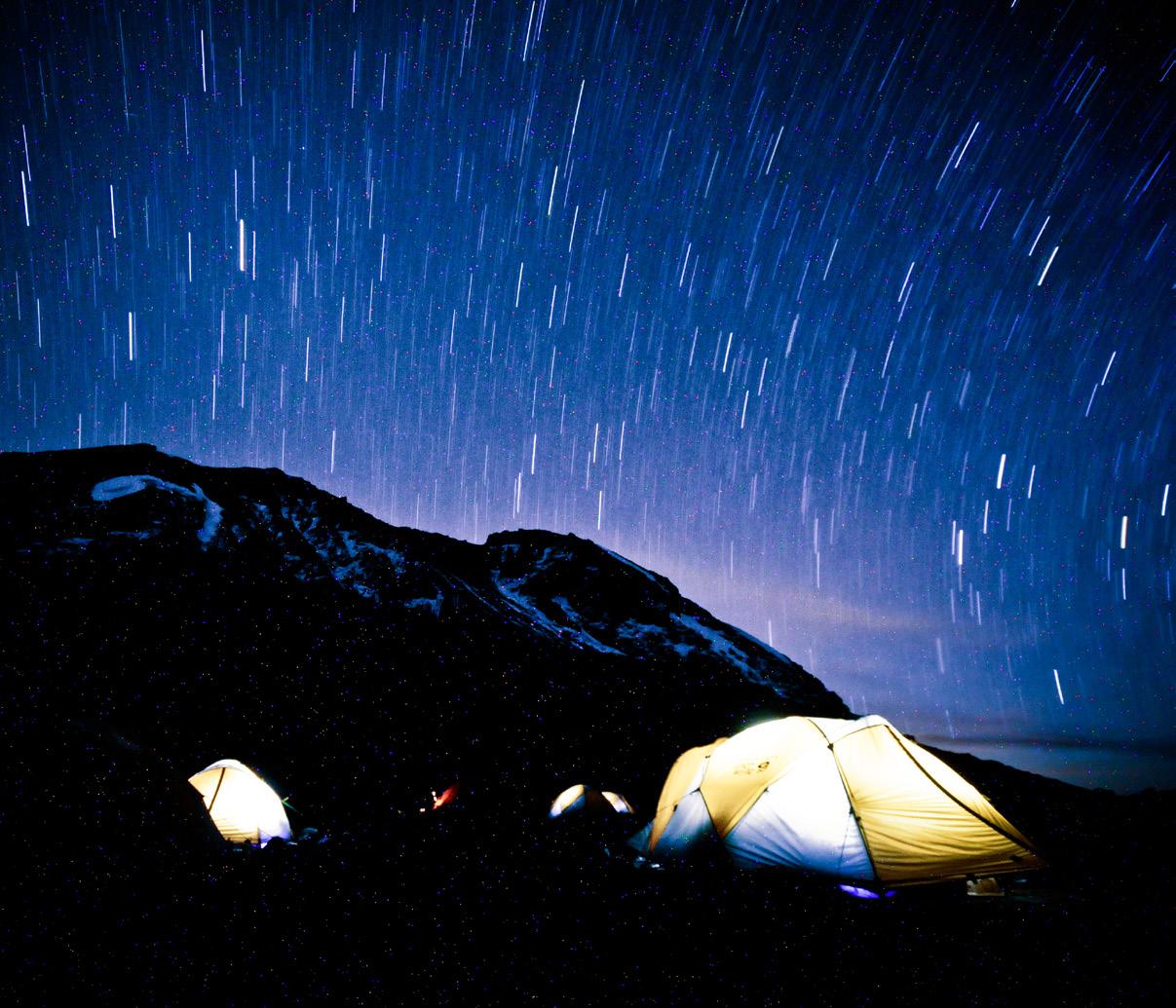
An overnight stay at Crater Camp before reaching the summit is a Mountain Madness tradition. You’ll wake up to a nice cup of hot tea brought to your tent after a good night’s sleep, with only a short hike to the summit remaining. Remember, while you’re in your sleeping bag, other climbers are leaving their lower campsites at midnight and slogging up the scree slope through the cold and darkness. The short distance to the summit from Crater Camp allows you to get a jump on other climbers, so you can enjoy the sunrise in solitude. With Mountain Madness it’s also about the food. Good food. You’ll not just be eating delicious meals; you’ll be having a dining experience. Sitting at a table. In a dining tent. On a volcano. This is not just about getting enough calories to carry you to the summit, it’s about enjoying those calories! The quality and variety of the food is exceptional. All dietary concerns can and will be addressed. If you choose to continue with a safari adventure after your climb, you’ll enjoy private camps far away from the busy lodges. Mountain Madness is one of the few companies
Photo Credit: David Bates
allowed to have private luxury safari camps in protected areas. They take great pride in these accommodations. Each A-frame styled canvas tent is equipped with two hand-carved wooden beds with comfortable mattress, a dresser and nightstand, and a front porch with a canopy and lounging chairs for relaxation. Only available to those in your group, they avoid the hustle and bustle of lodge-based safaris. By day you’ll have the opportunity to experience the beautiful landscape and wildlife of Tanzania with highly knowledgeable Tanzanian driver/guides. In the
Photo Credit: David Bates

evening, you’ll enjoy exquisite food and relax with a glass of wine as you listen to the wild sounds of Africa under a star-studded sky. Mountain Madness travels in customized Land Cruisers that ensure everyone has a spectacular view of the landscape and wildlife while riding in comfort. You’ll encounter the diverse aquatic ecosystems in Lake Manyara, and the opportunity to see rhinoceros, zebra, elephants, lions, and wildebeests in the Ngorongoro Conservation Area and in Serengeti National Park. In addition to your game viewing you’ll have a wonderful visit in the
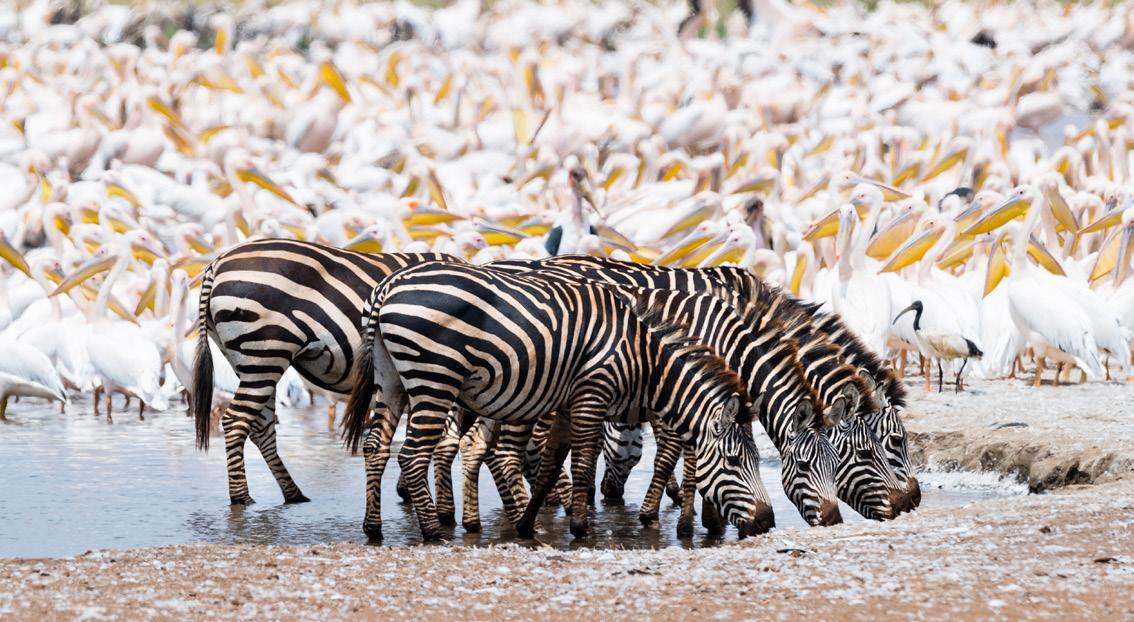
small village of long time Mountain Madness’ Maasai friend Olé Dorop and his family.
Your trip of a lifetime is only possible because of the experience, hard work and knowledge of the amazing Tanzanian staff. Mountain Madness offers rare career level work with commensurate wages, modern equipment and continuing education. During the low season in the spring and fall, they provide training programs in first aid, high altitude physiology, mountain rescue to their mountain leaders and additional
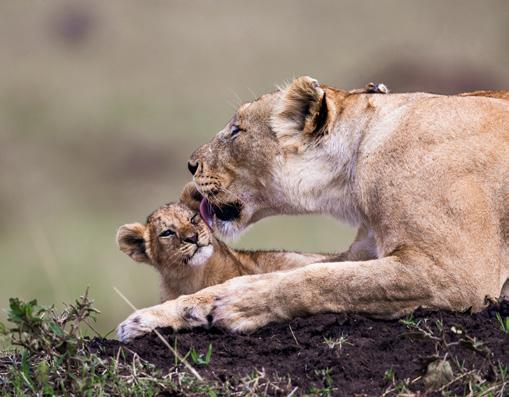
courses to their cooks, drivers, and porters. Mountain Madness feels it’s important to make available opportunities for personal growth and career advancement. Mountain Madness has also joined forces with the Himalayan Explorer’s Connection (HEC) Porter Project. This project has developed guidelines for the proper treatment of porters, ensuring porters have appropriate gear, food, shelter, water, and access to medical care, among many other things. The HEC Porter Project also educates tourists on porter treatment and encourages the reporting of abuse.
Over twenty porters a day attend the classes that are offered free of charge through the HEC Porter Project. Mountain Madness is proud to be involved with such an important program.
As an environmentally conscious adventurer, you’ll most likely be concerned about the environmental impact of your journey. The fragile tropical alpine environment of Kilimanjaro receives up to 27,000 visitors per year and hauling trash off the mountain is costly as it requires the hiring of additional porters. Instead of incurring that extra expense, many expedition companies simply leave their trash behind. Now the Tanzanian National Park Service requires all climbing operators to haul away their own trash, and to guarantee compliance, the Park Service weighs the trash when a trip leaves the exit gates of the mountain. Also, until recently, many cooks and porters collected their cooking fuel from the mountain forest because their cut-rate operators would not purchase stoves and kerosene or hire the porters required to carry them. In 1999, to help end the plunder of the mountain’s forests, all companies were required to provide kerosenefueled stoves on climbs. Mountain Madness not only complies with local regulations, they have been hauling trash off the mountain and providing porters with kerosene stoves since they started trips to Kilimanjaro in 1984.
Diversity makes the world a better place. Mountain Madness has put a lot of thought and effort into creating meaningful cultural interactions that are a valuable experience and positive for everyone. We have long relationships, spanning decades with indigenous groups that provide a genuine window into the daily lives of the people of Tanzania. Meals are shared, songs are sung, dances are danced, and stories are told.

Photo Credit: David Bates

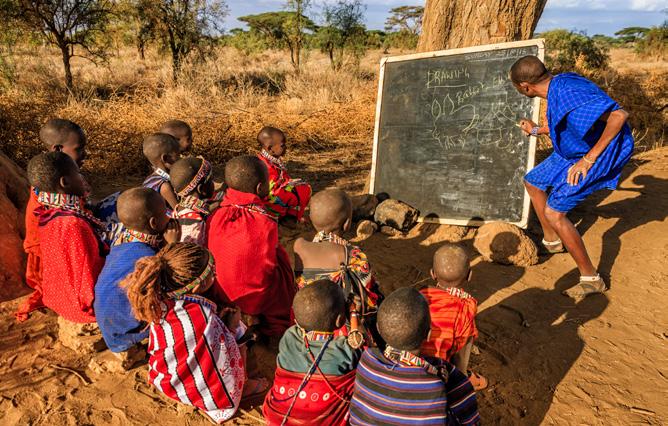

Mountain Madness also hires local guides from the village areas they visit which is an important source of income for the villagers.
Because many Mountain Madness visitors are interested in contributing to the welfare of Tanzania, they have identified and developed some important projects to which clients can contribute and visit. All of these projects are grass roots and ongoing, and their current project supports a rural village school with over 600 students near the city of Arusha. Mountain Madness has delivered school supplies, books, laptops, and sports gear, and has an ongoing commitment to support this small school.
Kilimanjaro. Respect the Earth, treasure the climb, and make your summit dreams a reality with Mountain Madness. What are you waiting for? Use promo code “mountain” and book your trip today! ymore info: www.mountainmadness.com
Benefits of Ashtanga Yoga
By Scarlet Baker
The benefits of Ashtanga Yoga are significant to the mind, body, and spirit. When it comes to incorporating an allencompassing exercise into your life, Ashtanga offers benefits to all aspects, both in and outside of the studio or classroom.

Ashtanga Yoga is a traditional method of yoga with its roots going back thousands of years. It was internationally popularized in the twentieth century by yoga teacher K. Pattabhi Jois. Its longstanding relevance in the world of yoga has proved its ability to connect us with a world far beyond our own while still offering applicable modern uses.
IMPORTANCE OF ASHTANGA YOGA By incorporating a substantial list of challenging postures with a strong flow of breathing and a deep focus on meditation, you can build positive influences into all aspects of your life. The traditional practice of Ashtanga Yoga is a daily ritual and this makes it more than just a yoga class—it’s truly a lifestyle. With such an emphasis on consistent practice you will quickly notice improvements. Soon those challenging poses will become second nature and your body will build up the physical and mental strength needed to practice each day.
PHYSICAL BENEFITS OF ASHTANGA YOGA Ashtanga postures can offer great physical benefits by engaging all areas of your body. Improving flexibility and building muscle are just the start: by incorporating a strong breathing flow into your practice, you are also improving cardiovascular strength and lowering your blood pressure. An Ashtanga course can be demanding. While this might be intimidating at first, it can be highly rewarding once you familiarize yourself with the routine. Building muscle will probably be the first benefit you notice from Ashtanga Yoga, as many of the asana feature challenging positions utilizing arm strength to maintain balance. These poses put an emphasis on your upper body strength as well as your core, as they must be engaged when holding these positions. Improved flexibility is another wonderful benefit. By putting your body into these strenuous positions, you are also pushing your body to stretch in new ways. Yoga pushes the body’s flexibility, but Ashtanga is particularly challenging. With each class offering a physically demanding


session at least a few times a week, you will notice your flexibility improve in a matter of weeks. If you are someone who has always felt their flexibility was lacking, Ashtanga Yoga might be the most efficient and healthy way to achieve improvements. Breathing plays a central role in yoga—it is the connector between the physical and mental actions being performed in a session. Having a consistent breathing flow gives you a centering point when it comes to meditation, but it also fuels your body with the oxygen needed to perform each posture. During a session, your lungs are constantly working to provide a consistent breathing flow, and this is what makes yoga such a great cardiovascular exercise. By developing a strong breathing technique, you are training your body to efficiently pump blood to all extremities. This has many health benefits such as improving your heart’s function, strengthening blood vessels, and lowering blood pressure. These are critical elements of our health that we might not consider unless our doctor has already addressed them as needing improvement. Incorporating yoga into your everyday life is a great way to preemptively improve and maintatin your health.
MENTAL BENEFITS OF ASHTANGA YOGA It might not be as easy to notice improvements with your mental strength, but this is another fantastic benefit of Ashtanga Yoga. Once you have learned the sequence of postures utilized in your Ashtanga class and have determined how your body feels in each pose, you can start to focus on the mental aspects of the practice. This is when you truly start to look inward and reap the mental benefits. As you set out to begin an Ashtanga Yoga class, know that you will require mental fortitude. The patience, attention, and determination developed in the classroom will help you improve your Ashtanga practice, but they can also help improve aspects of your everyday life. Meditation is the act of stilling the mind. By removing yourself from the external forces present around you, you can focus on yourself. Through meditations you can build many great mental skills, from managing stress and anxiety to developing decision-making capabilities. The way in which we typically rush through our busy lives does not allow for dedicated time to reflect and focus on ourselves. Ashtanga Yoga is a great place for you to incorporate some time for reflection into your life; a place where reflection is not only allowed but encouraged.

Stress and anxiety are forces that influence our lives more than we realize. If you let stress and anxiety overcome your life, they can have a lasting influence on your mental and physical health. Whether they inhibit your ability to operate within your own life or they negatively reflect on those around you, the relationship we have with stress and anxiety is something we should spend more time understanding. Meditation in Ashtanga is wonderful for reinforcing those reflective skills that can be wielded in other areas of life. While in the classroom, you won’t be challenged with any immediate problems other than achieving each posture. Take this time to practice building mental patience and
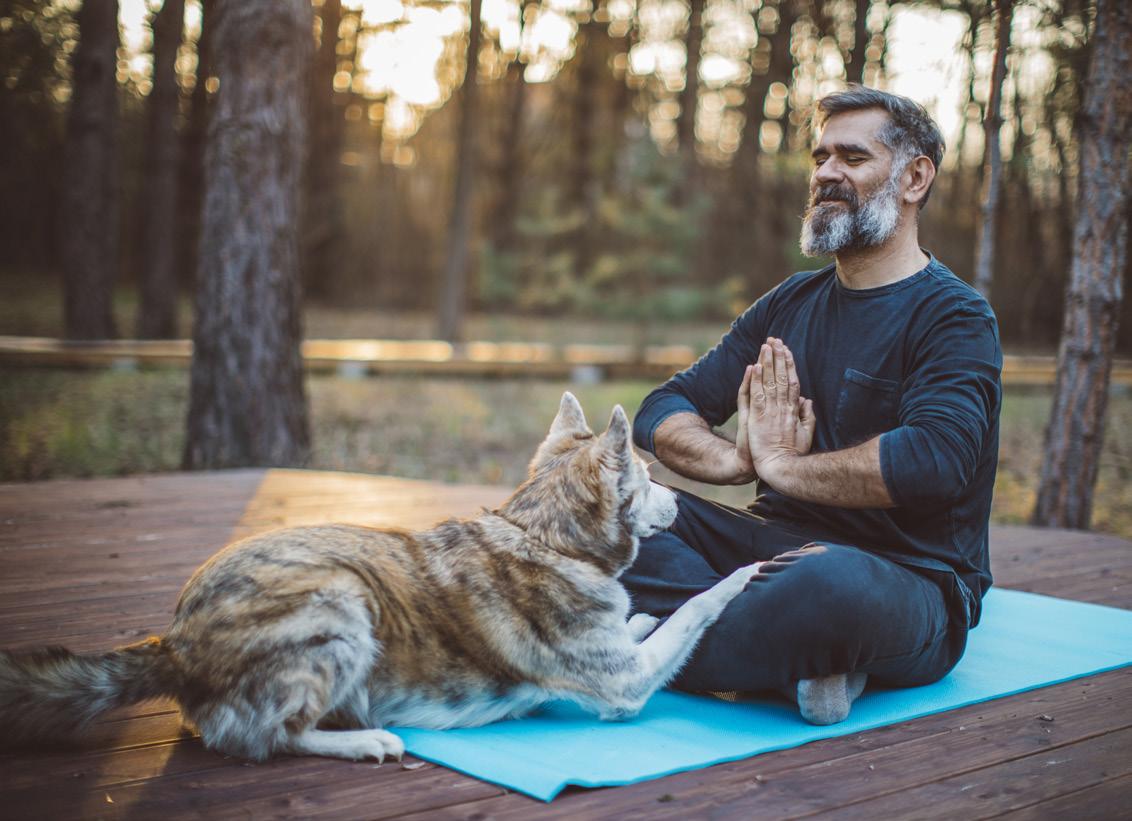
understanding what you need to do to achieve the goal before you. This way, when you are outside of class and are challenged with a difficult situation, you can apply those same mental skills and navigate them with composure. Being able to minimize stress and anxiety can help clear your mind of negative influences, making way for constructive thought processes. This is when you can develop positive skills like focus, creativity, and improved decision-making. By removing external distractions, you are free to focus on accomplishing the challenge at hand. Whether it’s completing a project, coming up with new ideas, or making a difficult decision, Ashtanga can be the physical practice that helps improve mental aspects of life as well. (And, we can all find uses for a more efficient mental state in our personal and professional lives!) Whatever your reason for undertaking an Ashtanga Yoga practice, you will most assuredly achieve physical improvements and mental growth. By strengthening the body and mind, you may also find a deeper spiritual connection to that which you hold in life’s golden light.
Namaste.






